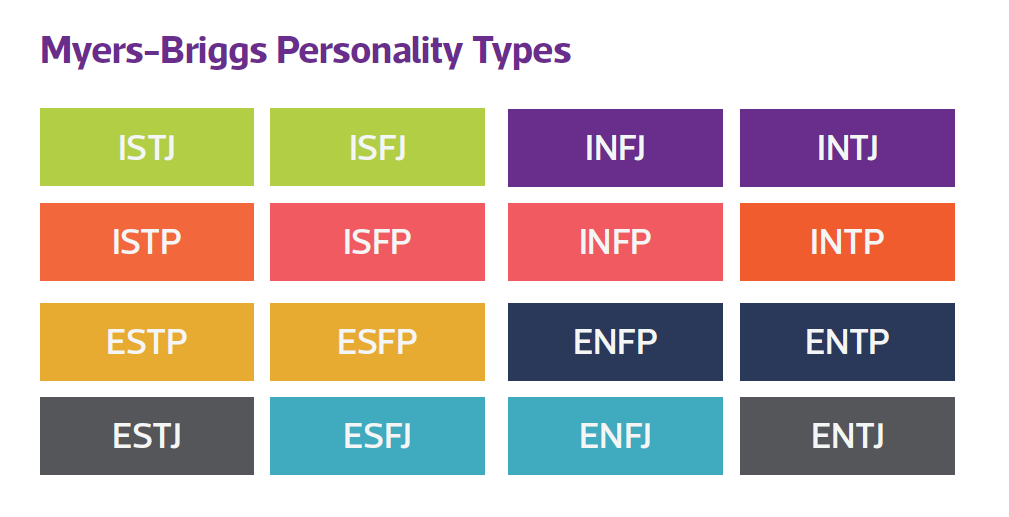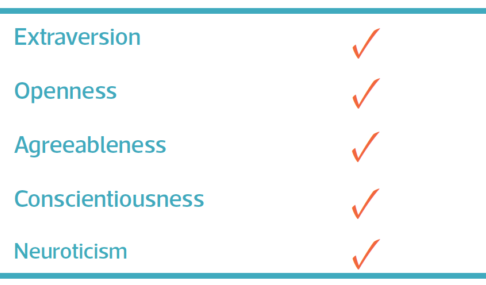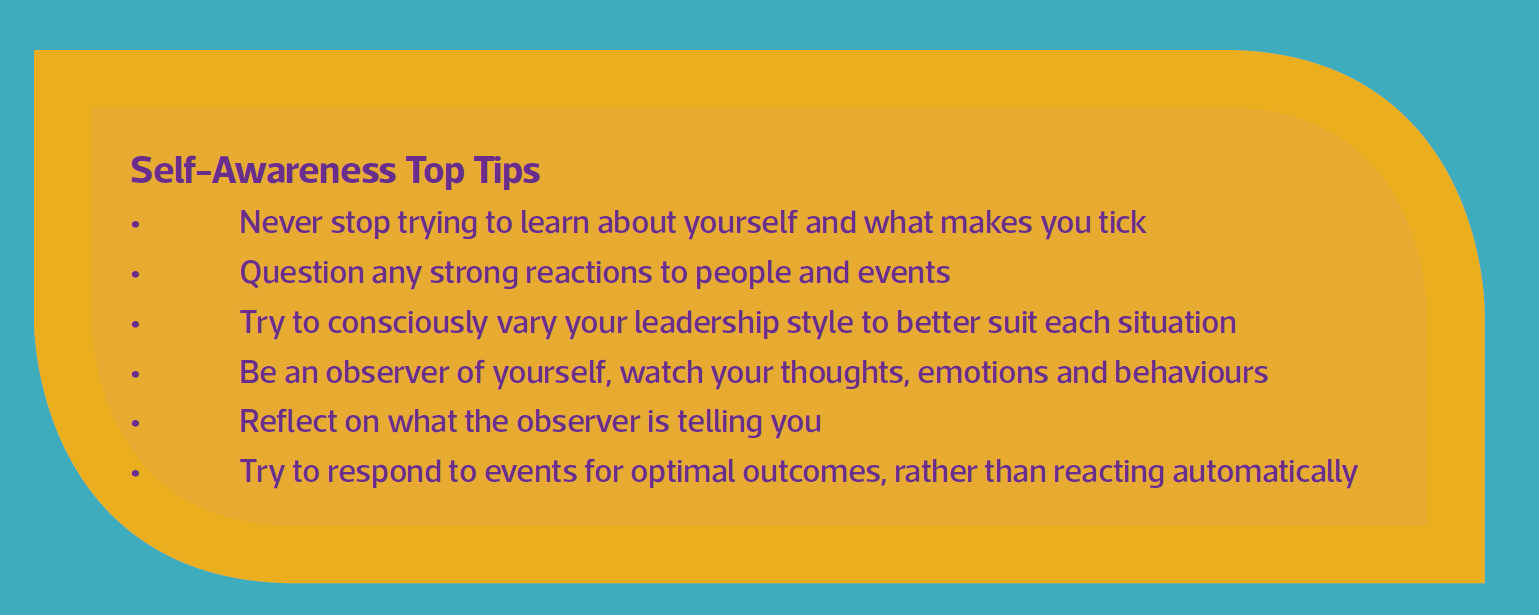“Self-awareness is a never-ending journey. There is no quota for self-awareness. It’s a tank that can always be filled up more. The key is knowing with confidence where you are, where you’re going and how you’re improving with every opportunity that presents itself.”
Lee Eisenstaedt (2019)
Leadership and Self-Awareness
Successful leadership is grounded in self-awareness. If you are self-aware it means you have made (and are constantly updating) an accurate appraisal of your personality, of what motivates you, and what your strengths and weaknesses are. Without self-awareness, your effectiveness will always be limited. You will be unable to properly balance all the conflicting demands made on you, or juggle them for the best outcome.
As a result of your own self-awareness, you are in a better position to judge and adapt your leadership style as necessary. It also gives you a much better chance of understanding the biases and prejudices that you did not know that you had.
Personality Types
Knowing as much as possible about your own personality – particularly as other people see it – is core to self-awareness. There are as many personalities as there are people, but over the years there have been attempts made to categorise all these into a limited number of ‘types’. There are many different ways to classify personalities into ‘types’, and most of these classification systems have tests to help you determine which of those types you are. Even the most astute people have ‘blind spots’ about themselves and these tests will help you uncover them.
The Myers-Briggs Type Indicator, or MBTI, is one of the most well-known (Briggs et al., 1998). MBTI is a self-administered questionnaire that uses four categories as a basis for identifying personality types, i.e.
- Introversion (I) - Extraversion (E)
- Sensing (S) - Intuition (N)
- Thinking (T) - Feeling (F)
- Judging (J) - Perception (P)

As each person is assumed to have one quality from each category, this produces sixteen unique personalty types.
Goldberg's (1990) ‘Big Five Theory’, on the other hand, suggests that there are five main personality attributes that can be measured in each individual:

There is a lot of information available, online and elsewhere, explaining the implications of your scores in these tests, including where your strengths and weaknesses lie. To get the best out of the tools it is recommended that you use a trained coach to provide feedback on the outcomes of the assessment tools.
Another way to get better acquainted with your own personality is to observe yourself in action over a period of time; objectively record what you see, and reflect on it. This often brings to lights aspects of yourself which you’ve never really thought about before.
The important thing about a better understanding your underlying personality is that it means you can adjust your behaviour in situations for the best outcome. If you see a situation coming, or actually end up in a situation, which your personality is not naturally suited to, you can make extra efforts to overcome that, or try to change the situation to one that suits you (providing that does not interfere with the organisation achieving its objectives), or step aside and let somebody who has the appropriate strengths deal with it.
The Leadership Continuum
Everyone has a preferred, and often automatic, leadership style. Tannenbaum and Schmidt (1958) identified four main leadership styles that are displayed below, ranging from the most autocratic (left hand side) to the most democratic. They called it the ‘Leadership Continuum’ and suggested that the style you use should be decided by the level of capability and willingness of the employees involved.

Goleman (2000) suggests six main approaches a leader can take:
- Coercive leaders demand immediate compliance
- Authoritative/Visionary leaders mobilise people toward a vision
- Affiliative leaders create emotional bonds and harmony
- Democratic leaders build consensus through participation
- Pacesetting leaders expect excellence and self-direction
- Coaching leaders develop people for the future
Although he warns against excessive use of a coercive or pacesetting style, Goleman’s research indicates that leaders who get the best results don’t rely on just one leadership style; they use most of the styles in any given week. Self-aware leaders will know which style they tend to favour, and can then make efforts to adapt that when appropriate. Self-aware leaders can also stand back and objectively observe the effect that various styles have on different people in diverse situations, and use that information to guide their future actions and reactions.
Emotional Intelligence
Emotional intelligence has gained increasing recognition as an important leadership attribute. It refers to the capacity for recognising our own feelings and those of others for both motivating ourselves and for managing our emotions better. Evidence shows that many people who have achieved high academic levels but lack emotional intelligence end up working for people who have lower IQs but who excel in emotional intelligence skills. Understanding the importance of emotional intelligence and how to develop it creates better teams and learning environments.

References
Briggs, M. et al. (1998) MBTI Manual: A guide to the development and use of the Myers Briggs type indicator. 3rd ed. Palo Alto: Consulting Psychologists Press.
Eisenstaedt, L. (2019). Self-Awareness: How Leaders Can Continually Improve Themselves. Forbes [online]
Available from: https://www.forbes.com/sites/forbescoachescouncil/2019/07/10/self-awareness-how-leaders-can-continually-improve-themselves/?sh=32170c254781 [Accessed 18 Aug 2022]
Goldberg, L. R. (1990). An alternative "description of personality": The Big-Five factor structure. Journal of Personality and Social Psychology. 59 (6), pp. 1216–1229.
Goleman, D. (2000) Working with Emotional Intelligence. 1st ed. London: Bloomsbury.
McCrae, R. and Costa, P. (1989) Reinterpreting the Myers-Briggs Type Indicator from the Perspective of the Five-Factor Model of Personality. Journal of Personality. 57 (1), pp. 17-40.
Palmer, H. (1988) The Enneagram: Understanding Yourself and the Others in your Life. 1st ed. San Francisco: Harper and Row.
Tannenbaum, R. and Schmidt, W. (1958) How to choose a leadership pattern. Harvard Business Review [online]
Available from: https://hbr.org/1973/05/how-to-choose-a-leadership-pattern [Accessed 18 Aug 2022]
Are you a self-aware leader? Test yourself with our Scorecard.
If you’re a member, you can test yourself on your self-awareness skills and see if you meet the standard.
Spotlights
Further Resources
From the Blog










